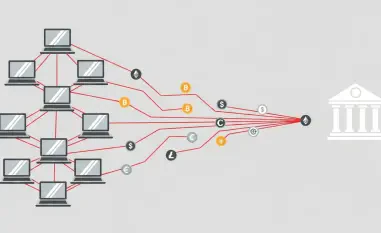In the intricate realm of cybercrime, there’s a relentless battle between emerging threats and enforcement efforts. Recent developments have spotlighted the emergence of a new ransomware entity known as Chaos. Its rise to notoriety epitomizes the evolving landscape of digital threats, characterized by increased sophistication and globalization. Amidst this backdrop, Chaos has strategically positioned itself as a formidable adversary, leveraging advanced techniques to exert pressure on victims and circumvent detection. As one cybercrime gang falls, another inevitably ascends, maintaining a perpetual cycle of cyber threats that challenge even the most vigilant security frameworks.
New Age of Ransomware Tactics
Understanding Double Extortion and Its Impacts
The introduction of double extortion attacks by Chaos has marked a pivotal shift in the ransomware landscape. This method involves encrypting files while simultaneously stealing sensitive data, pressuring victims to pay the ransom not only to regain access to their files but also to prevent the public exposure of confidential information. This dual-threat tactic introduces a new layer of complexity and distress for affected entities, compelling them to consider the severe reputational and operational consequences associated with data breaches. The pressure exerted by these tactics underscores the evolution from traditional ransomware methods to more intricate forms of attack.
Chaos’s versatility in deploying such tactics hasn’t gone unnoticed. Cybersecurity experts speculate that the group’s sophistication may be due to remnants of the defunct BlackSuit gang, whose encryption methodologies and tools bear resemblance to Chaos’s approaches. This continuity of skills and strategies across different avatars of ransomware groups illustrates how cybercriminals reinvent themselves to stay ahead of law enforcement. By establishing itself on platforms like RAMP, a well-known cybercrime forum, Chaos seeks to attract affiliates and collaborators, ensuring their methods are perpetuated across various sectors and geographies.
The Technological Arsenal and Geographical Reach
Chaos’s operations extend beyond mere ransomware attacks to encompass a comprehensive technological arsenal aimed at maximizing its impact. The group capitalizes on cross-platform capabilities, ensuring their ransomware can function across different operating systems like Windows, ESXi, Linux, and NAS. This adaptability, coupled with techniques such as individual file encryption keys and efficient network resource scanning, fortifies Chaos’s ability to breach even well-secured environments. Moreover, their encryption process is designed for speed and efficacy, minimizing detection opportunities and expediting the ransom demand process.
The geographical scope of Chaos’s targeting is equally noteworthy. Predominantly zeroing in on the United States, the United Kingdom, New Zealand, and India, the group’s strategic operations reflect an understanding of regional economic climates. By focusing on economically robust regions, Chaos maximizes its potential ransom returns, compelling organizations with more valuable assets to acquiesce to their demands. This focused approach amplifies their financial success and underscores the targeted, meticulous nature of contemporary ransomware groups.
Operational Sophistication and Strategic Positioning
Tactics for Avoiding Detection
Chaos employs a myriad of sophisticated tactics to avoid detection and ensure successful infiltration of target systems. By leveraging multi-threaded selective encryption and anti-analysis techniques, they efficiently navigate past sandbox environments and virtual machines designed to track and thwart cyber threats. This ability to evade conventional cybersecurity measures adds a layer of complexity to addressing their attacks, posing significant challenges to businesses and cyber defense teams alike. Chaos’s deliberate obfuscation methods highlight a growing trend among ransomware actors focused on avoiding detection and prolonging their access to compromised systems.
Their remarkably strategic approach doesn’t stop at technology. Influencing perception on Dark Web forums, Chaos claims to refrain from attacking BRICS nations, CIS countries, and critical sectors such as healthcare and government. While this purported ethical standpoint could be perceived as an attempt to garner favor within certain circles, it should not detract from their intense focus on exploiting private sector entities. This duality in their public posture versus actual operations reflects a strategic positioning intended for both internal alliances and outward manipulation.
Social Engineering and Systematic Attacks
Success in Chaos’s campaigns often hinges on well-executed social engineering techniques. These methods involve manipulating victims into unwittingly granting access to their secure environments. Once inside, Chaos operatives utilize remote access tools to execute payloads and establish command-and-control connections. This enables them to gain a foothold in victim systems, escalating privileges to facilitate widespread data exfiltration and leverage during ransom negotiations. The systematic nature of these attacks suggests a refined strategy, reflective of an organized crime group with precise, well-defined goals for each operation.
This intricate execution showcases an adaptation of traditional crime syndicate structures into the digital age, where durable operational frameworks underpin their success. Despite alarming threats, understanding these methods provides vital insights into how attackers operate, aiding in the formulation of robust defensive strategies. These insights, derived from careful analysis by cybersecurity professionals, are fundamentally shaping our understanding of how to counteract these ever-evolving threats in this complex domain.
Strategies for Combating Chaos
Reinforcing Cybersecurity Defenses
Mitigation strategies against entities like Chaos require a concerted effort in reinforcing cybersecurity defenses. Organizations must prioritize general security hygiene, ensuring that suspicious requests and communications are scrutinized through independent channels before granting access. A heightened focus on email security, rigorous remote access protocol management, and adoption of phishing-resistant authentication mechanisms, such as FIDO keys, becomes paramount in combating potential infiltration attempts. By fortifying these entry points, enterprises can significantly reduce their susceptibility to Chaos’s elaborate schemes.
Embarking on a path of proactive defense mechanisms involves an amalgamation of technology and awareness. Training employees to recognize and thwart phishing attempts, coupled with regular system audits and penetration testing, can lay the groundwork for a resilient security framework. Emphasizing continuous updates and patches to software and systems further protects against exploitation of known vulnerabilities. Enterprises must invest in fostering a culture of cybersecurity best practices, incorporating them into every facet of their operations to create a fortified barrier against the persistent incursions of sophisticated ransomware entities.
International Cooperation and Ongoing Resilience
In the complex arena of cybercrime, a constant struggle unfolds between the rise of new threats and the attempts to combat them. Recently, a new ransomware group named Chaos has emerged, gaining prominence as it exemplifies the changing face of digital threats. These threats are becoming more sophisticated and spread globally. Within this context, Chaos has effectively positioned itself as a major opponent, using advanced methods to intensify pressure on victims and evade detection. As one group of cybercriminals falls, another rises to take its place, perpetuating an ongoing cycle of cyber threats that continuously challenge even the most observant security systems. Cybersecurity experts face a relentless challenge to keep pace with these constantly evolving threats. This cyber arms race illustrates the need for innovative strategies and technologies to protect critical data and maintain cyber resilience. Understanding and preparing for such advanced threats is crucial in defending against the constantly shifting battleground of cybercrime.













